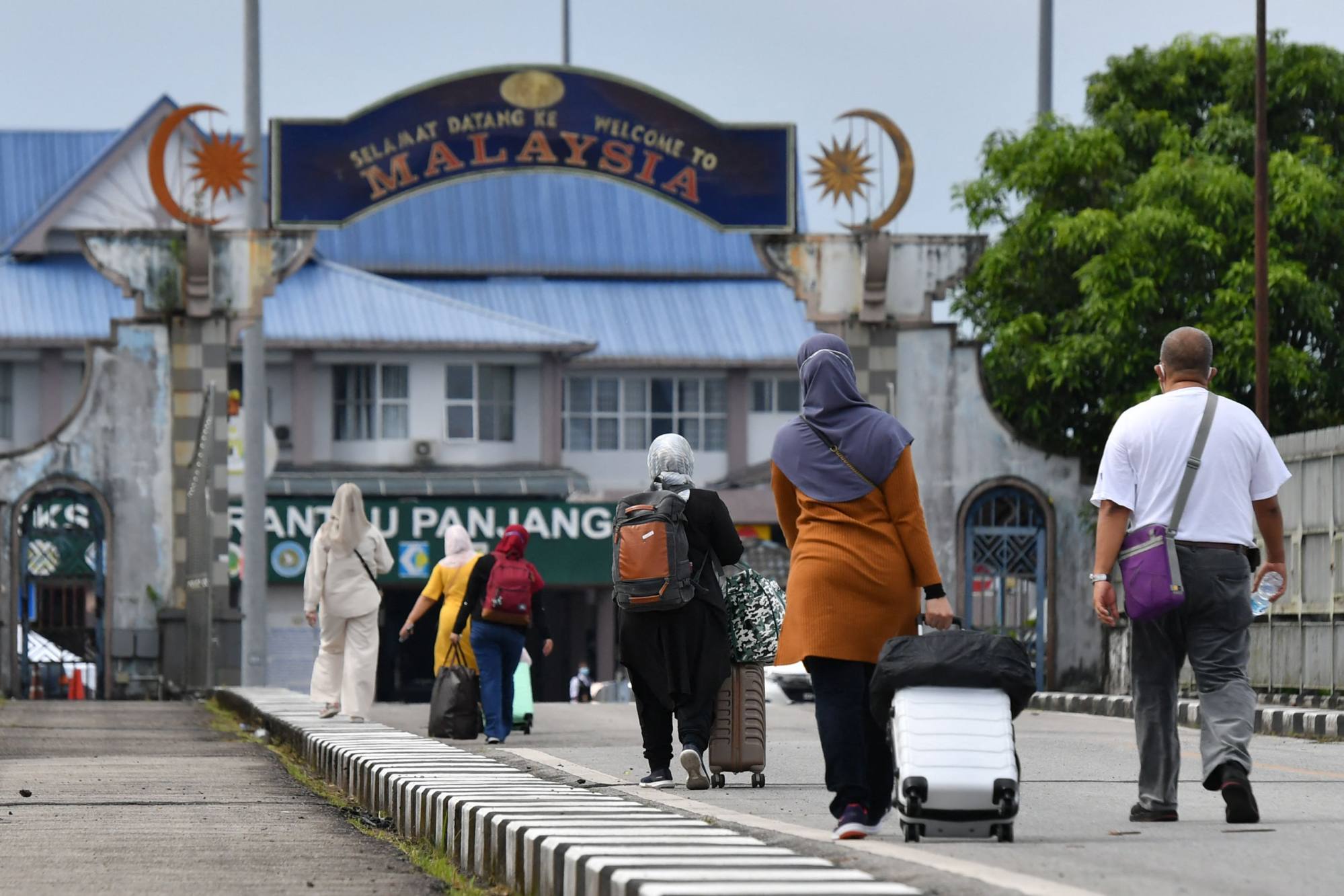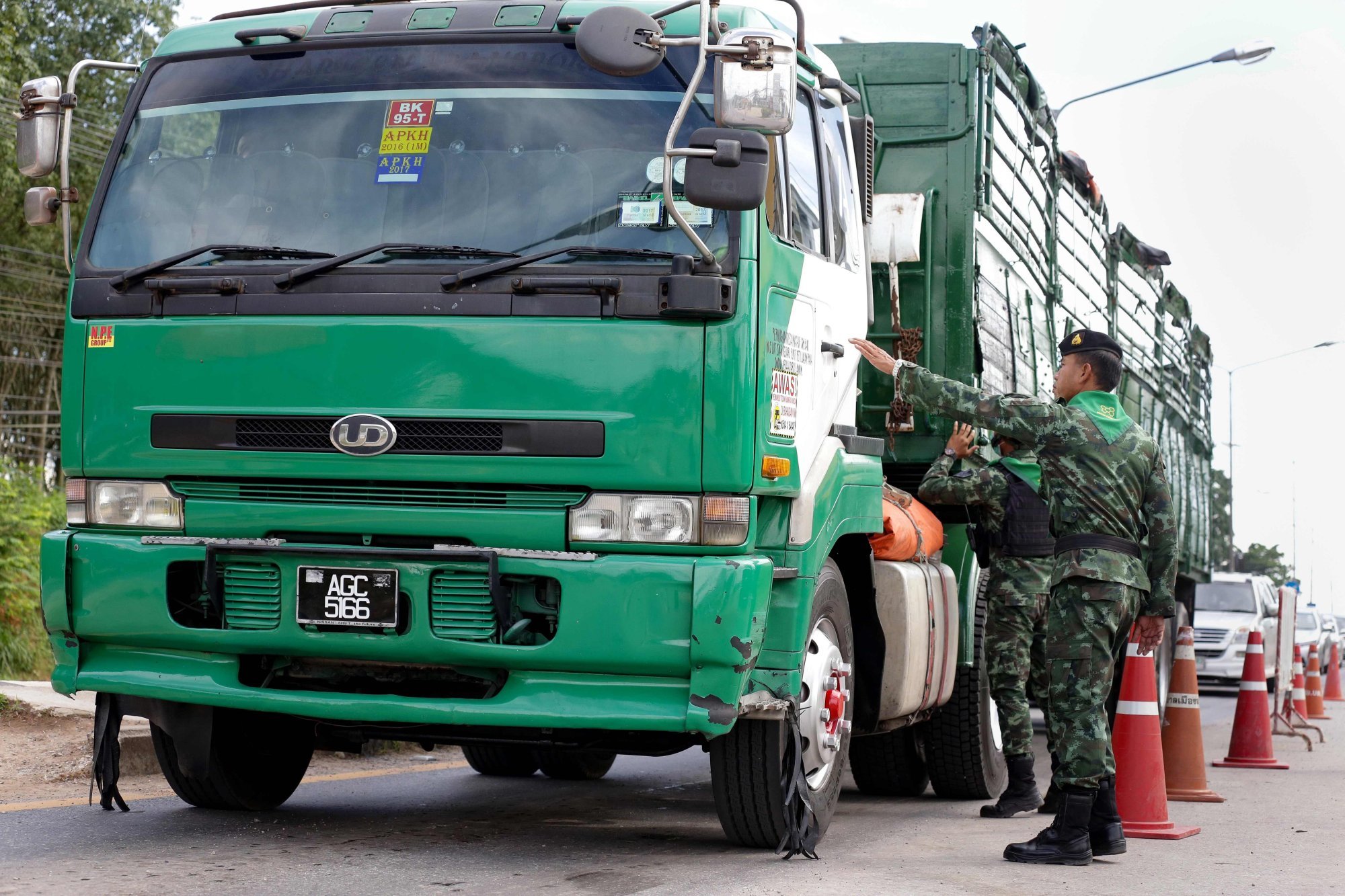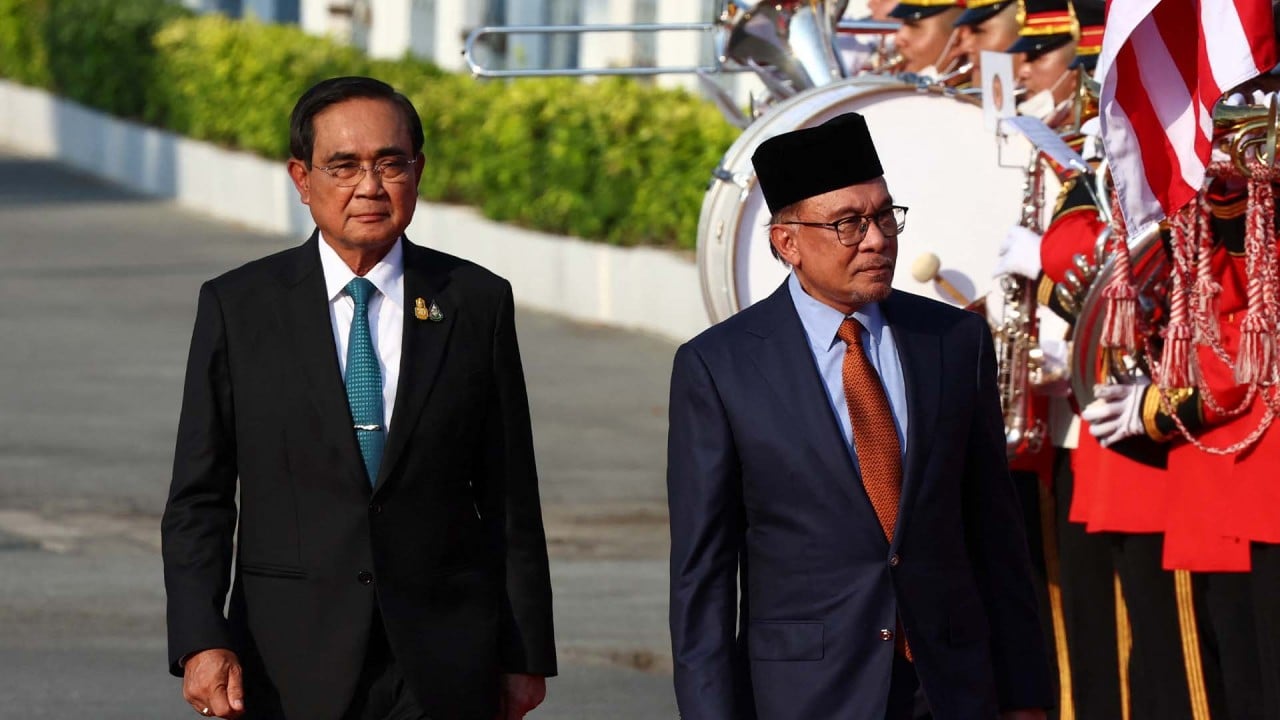
Insurgents, drugs – and tourists: ‘dangerous places’ at the Malaysia-Thailand border
- Multiple checkpoints and official border posts do little to deter people from flitting across the 595km-long serpentine frontier virtually at will
- As Myanmar’s drugs and workers flow south from Thailand, Malaysia’s holidaymakers, subsided fuel – and militants – all head in the opposite direction
Yet that explanation was not enough to prevent her being taken from the airport to an overcrowded immigration detention centre in Bangkok for an overnight stay before being deported, in an ordeal she says was completely unnecessary.
“I was mistreated like a criminal, left bewildered and stripped of my rights and dignity,” Siti, 35, told This Week in Asia. She declined to give her full name out of concern for her privacy.

Siti crossed back into Malaysia in January at the Satun-Wang Kelian checkpoint – one of nine land border crossings between the two countries.
Her unwitting slide into Thailand’s inscrutable immigration system has shed light on the imperfections of control at a shared border where people from both sides flit across freely – while contraband goods and drugs are moved on a major scale.
The frontier was clumsily delineated by a 1909 agreement between Malaysia’s British colonisers and the-then Kingdom of Siam, which separated speakers of Kelantan-Patani Malay between the two nations.
Multiple checkpoints and official border posts do little to deter insurgents and traffickers of drugs and people, with contraband petrol and cigarettes – as well as day trippers – from either side moving across virtually at will. Many who live nearby have relatives and business interests on both sides of the dividing line.
Thailand and Malaysia discuss building border wall to enhance security and curb trafficking
Better wages and economic opportunities in Malaysia have long enticed economic migrants from Thailand, whose southernmost provinces are among the country’s poorest. They work in popular Thai restaurants where undocumented migrants from other Southeast Asian countries can also fly under the radar, often mistaken for Malays from Kelantan.
Malaysian holidaymakers zip across the border into Thailand for everything from road trips up to the popular tourist destinations of Krabi and Phuket, to shopping tours in Hat Yai. The frontier town of Sungai Kolok, meanwhile, entices those seeking more lascivious pursuits.
Recently, Malaysians have started making the short one-hour drive to Hat Yai in Songkhla for a “foodie trip”, which has been gaining in popularity since pandemic border restrictions were lifted.
“It’s just there and it has all the Thailand things people want to see, and the food they want to eat,” said Latifah Mat Don, a tour guide in the Malaysian border town of Changlun, Kedah. “People don’t need to go to Bangkok.”
Flanked by the Andaman Sea to the west and the Gulf of Siam to the east, the narrow, hilly strip of land that connects the two nations is also popular with motorcyclists, who often venture on rides through its “crazy fun” roads that twist through mountains and remote towns in the Malay Muslim dominated area, which shares a culture and language with the neighbouring Malaysian states of Kedah and Kelantan.
“It’s hard to explain. You can ride six hours in Malaysia, but six hours in Thailand means you’re going across a wide variety of different geography,” said motorcycle aficionado Farhan Akmal, who recently went on a trip to the country with two friends.
That same geography, however, also proved favourable to insurgents from the Malayan Communist Party and its armed wing, who hid in the deep forest on the Thai side of the border before crossing across to launch guerilla attacks in Malaysia from the end of the Second World War until 1989, when a peace deal was struck.
The border region’s remote jungle now hides the camps of Malay Muslim rebel groups in the four southernmost Thai provinces of Narathiwat, Yala, Pattani, and parts of Songkhla who are seeking to break away from Thailand in a decades-long struggle whose latest violent chapter began in 2004 and has yet to close.
All of which adds jeopardy to any border crossing.
Malaysia ‘optimistic’ at progress in Thailand’s Deep South peace talks
A 26kg home-made bomb derailed a State Railway of Thailand train bound for the border in December, prompting Malaysia’s recently appointed Home Affairs Minister Saifuddin Nasution to advise his compatriots visiting the region to “plan their trip wisely”.
“It is the authorities’ responsibility, however, we need to avoid dangerous places. That should be the main principle,” Saifuddin said.
The minister also said that Bangkok and Kuala Lumpur will improve border control cooperation, but stopped short of elaborating on the details.
While diplomatic niceties mean Thai officials shy away from openly blaming Malaysia for harbouring insurgents, private security forces acknowledge northern Malaysia is an easy base for fugitives blacklisted in Thailand who can nevertheless pass freely back and forth across the many rivers and mountains that dot the permeable, serpentine 595km-long border.
Drugs out, fuel in
Criminal syndicates see the border as a corridor to move drugs, contraband and people south into Malaysia and then the wider region.
On April 10, Australian authorities confiscated 336kg of heroin hidden in concrete valued at A$269 million (US$182 million) in a shipping container that came through Port Klang, declared as solar panel accessories.
Drugs gangs’ ability to cross the border was starkly highlighted by the minimal impact on seizures made during the Covid lockdowns, experts say, despite the borders of Thailand, Malaysia and Singapore officially being closed for more than two years.

At the height of the pandemic in November 2020, Malaysia’s then-home affairs minister Hamzah Zainuddin said that drug seizures during the first half of that year rose by 35 per cent and had eclipsed the total amount of drugs seized in the entirety of 2019.
Workers from Myanmar are also trafficked through Thailand into Malaysia, where they staff plantations for wages of as low as 500 ringgit (US$112) a month.
Meanwhile, hundreds of thousands of litres of subsidised Malaysian fuel – half the price of that sold at Thai pumps – is ferried the other way every month, in what police say is a multimillion-dollar criminal enterprise.
Criminals have also used the porous border for ransoms and abductions. In September last year, a 26-year-old Malaysian woman was kidnapped in Tumpat, Kelantan, and smuggled into Thailand, just 10km away. From there, she was taken to the northern provinces of the country before her rescue by Thai authorities after more than two weeks in captivity.
It is a reality … There are those who are involved in corruption and they just ignore the illegal activities
An investigation by Malaysian police found that her kidnapping had been in retribution for a falling-out that had occurred between the victim’s husband and members of a drug trafficking syndicate to which he belonged.
A major reason for the gaps in border control is the integrity and competency of officers on either side of the dividing line, said international relations and security expert Mizan Mohammad Aslam from the National Defence University of Malaysia.
“It is quite sensitive but it is a reality,” Mizan said. “There are those who are involved in corruption and they just ignore the illegal activities.”
With huge sums of money passing through, he said the line between mistakes and cover-ups is easily blurred.

“Things might be planned to appear as a mistake to allow for smuggling and all sorts of other activities.”
Malaysian cross-border activist Abdul Halim Othman, who now lives in the Thai coastal town of Pak Bara, believes that Malaysians making the journey across into Thailand need to take personal responsibility and precautions.
“A single step across the border, even if it’s for a meal at the [border town of] Danok, we are already under Thai law,” he said.
Abdul Halim, who runs a website on driving in Thailand, gives advice on the proper paperwork necessary for the journey – as well as educating people about Thai driving norms and road etiquette, which can differ from what is practised in Malaysia.
6-year-old Malaysian boy crashes dad’s car after joyride with 3-year-old brother
He has volunteered to help dozens of Malaysians who have been involved in road traffic accidents in southern Thailand since 2011, with many having to fork out hefty sums for medical care as well as fines. Now he advocates for people to take out comprehensive insurance coverage and be more careful when making the journey.
“That is why backpackers who often go viral for going on cheap vacations to Thailand should think about the implications of what would happen in an accident,” Abdul Halim said.
Now safely back in Kuala Lumpur, Siti says her ordeal – while rare – has left its mark and ruined the allure of Thailand for good.
“I can assure you, I have no intention of returning to a country that held me captive in such a hostile manner,” she said.


